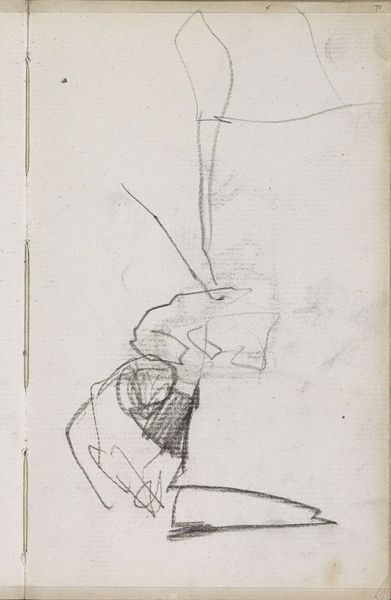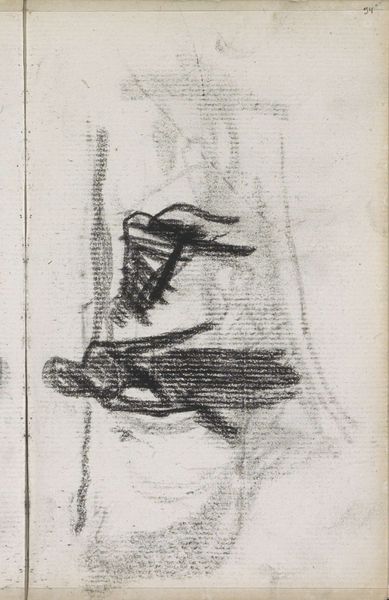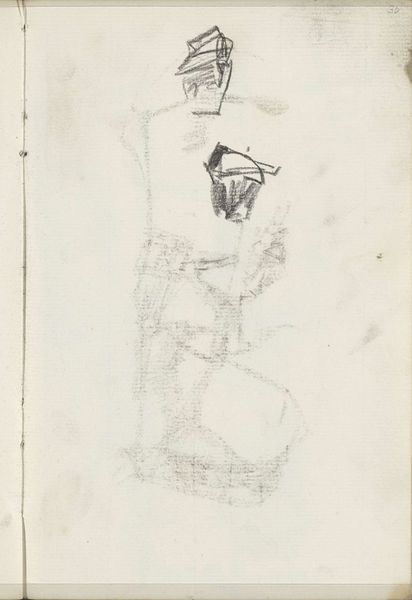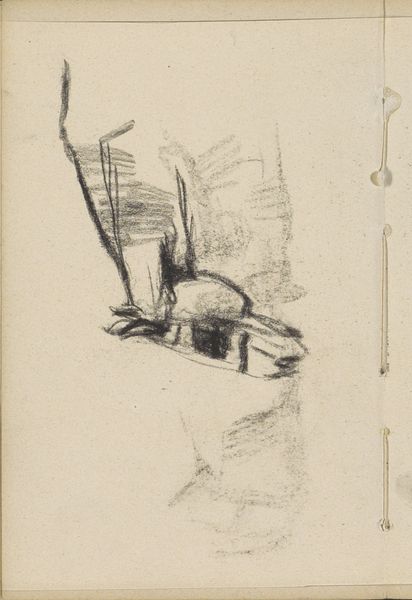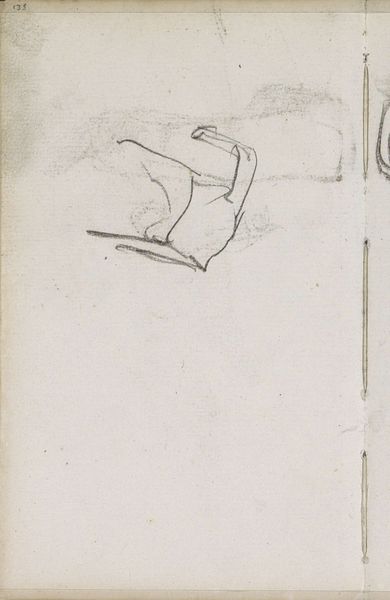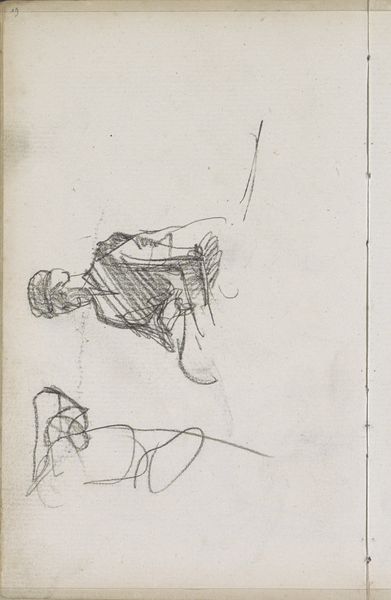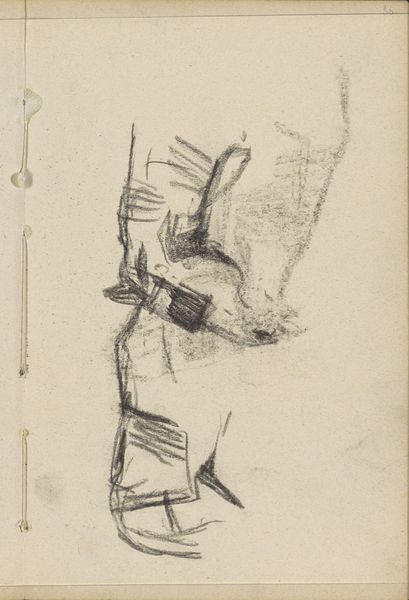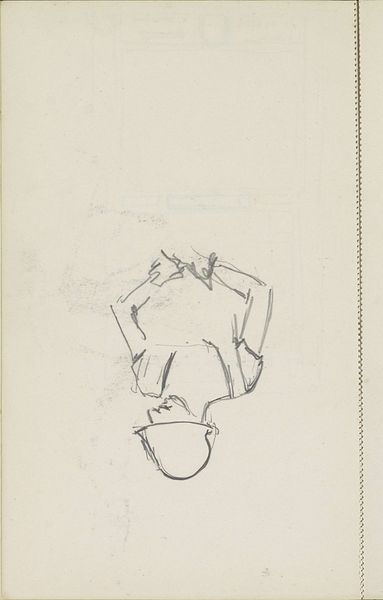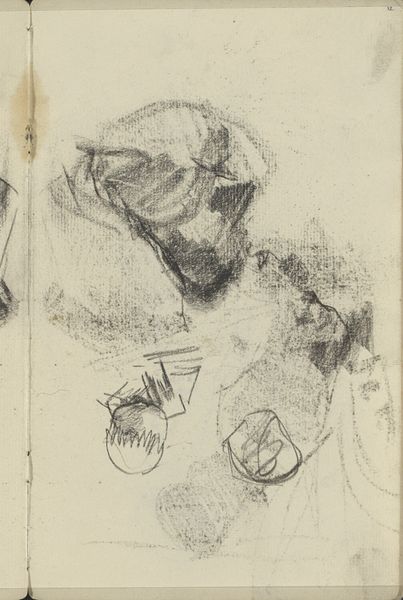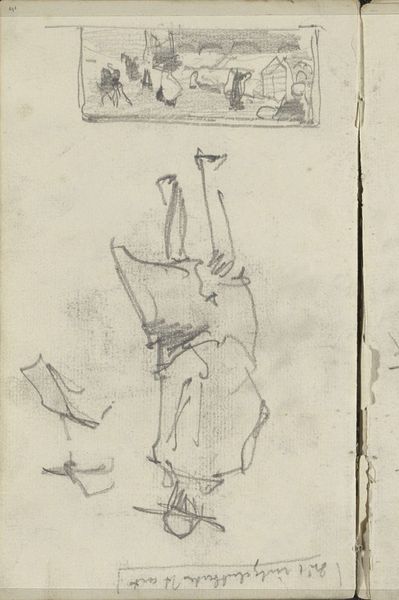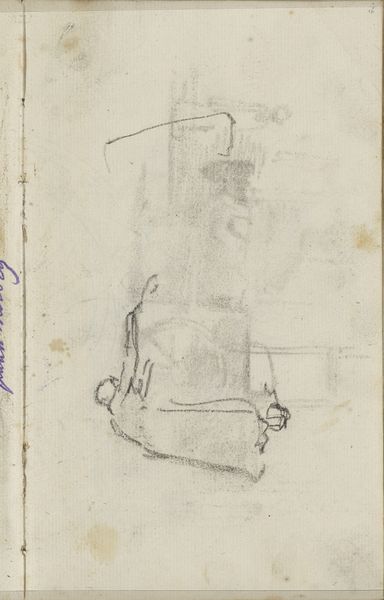
drawing, paper, pencil
#
portrait
#
drawing
#
impressionism
#
pencil sketch
#
figuration
#
paper
#
pencil
#
realism
Copyright: Rijks Museum: Open Domain
Curator: Looking at George Hendrik Breitner's pencil sketch, simply titled "Studie," dating from around 1884 to 1886 and housed here at the Rijksmuseum, my first thought is the sheer immediacy. The texture of the paper and the sharp contrast of the graphite suggest an artist capturing a fleeting moment. Editor: Indeed. The roughness of the pencil strokes gives the subject an unfinished, almost raw quality. Do you think this captures some particular aspect of human experience? I wonder if this relates more to social observations during that time period? Curator: I’d agree. It could certainly symbolize fleeting human vulnerability in the late 19th-century urban context. The sitter appears to be slumped, possibly indicating exhaustion or despondency, but equally the loose treatment may reflect Breitner's connection with everyday, working class scenes that were a staple in Impressionist subject matter, rather than idealised allegories. What kind of connections might you draw here? Editor: Interesting perspective. I focus on the pose—notice how it suggests introspection, even resignation? This recalls visual traditions for depictions of melancholia that stretches back through art history to early medieval book illuminations of, say, acedia—a monastic ennui—yet re-cast within the rapidly industrializing Netherlands. One could certainly argue there is some element of symbolic commentary through this figure study. Curator: I would press, though, to really unpack Breitner’s intention—are we seeing an appropriation of an established melancholy iconology, or are we simply seeing what might be deemed some working class realities stripped down? It is really not that uncommon. To add further, let's look closely at the material economy here: graphite pencil drawings on readily available paper, studies to facilitate a larger piece and all. I find it revealing that these became part of his artistic repertoire displayed today, rather than his more complete work. Editor: I can see your point; and certainly his emphasis on commonplace subject matter aligns well with an Impressionistic commitment to portraying life as lived by ordinary people. Nevertheless, symbols accrue significance over time, intentionally or otherwise, particularly when seen through that "symbolic" artistic lens. In a way, its suggestive inconclusiveness enhances this piece and, in fact, this contributes heavily to the work itself being a study that may be used as inspiration for larger completed artworks with social observations for many artistic consumers to reflect upon today. Curator: And here we see how a quick sketch of charcoal on paper from the late 19th century, originally maybe simply to study form, is viewed through contrasting but, equally so, relevant means! Thank you for providing us insight to our guests today. Editor: My pleasure. A valuable lesson, I think, in how images and objects, regardless of original purpose, may take on very interesting meanings when considering symbolism of production in an artist's portfolio.
Comments
No comments
Be the first to comment and join the conversation on the ultimate creative platform.
